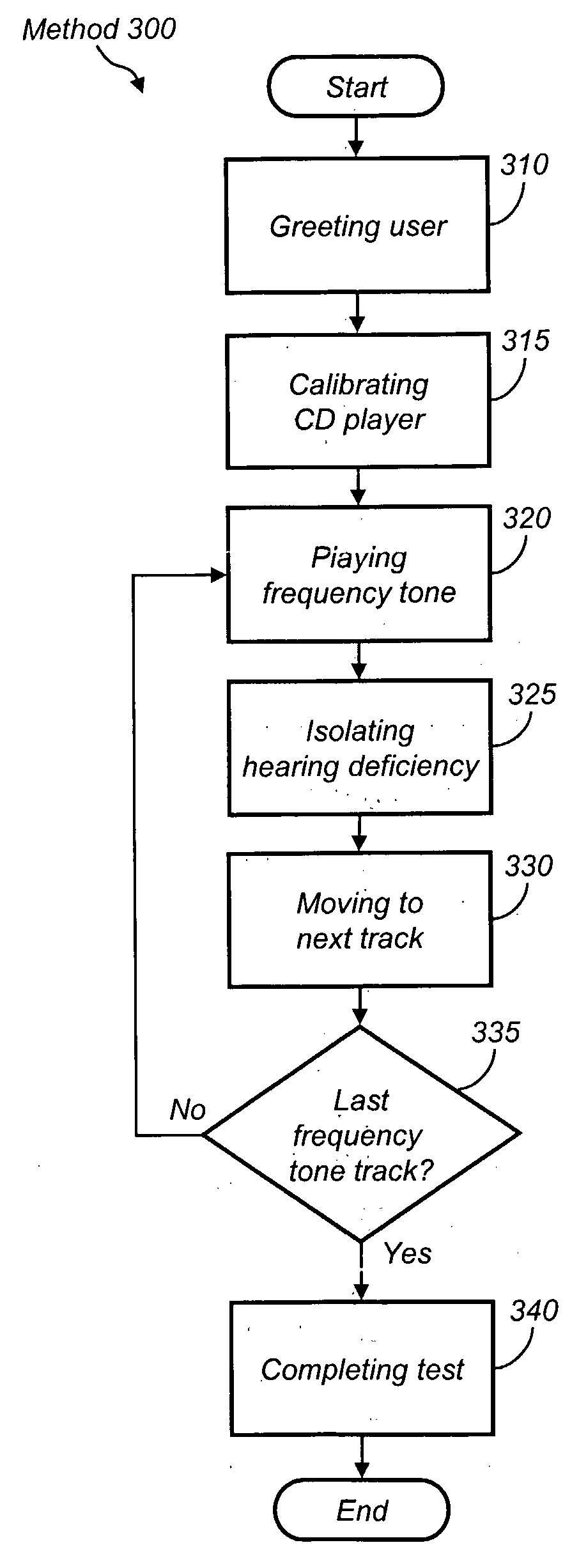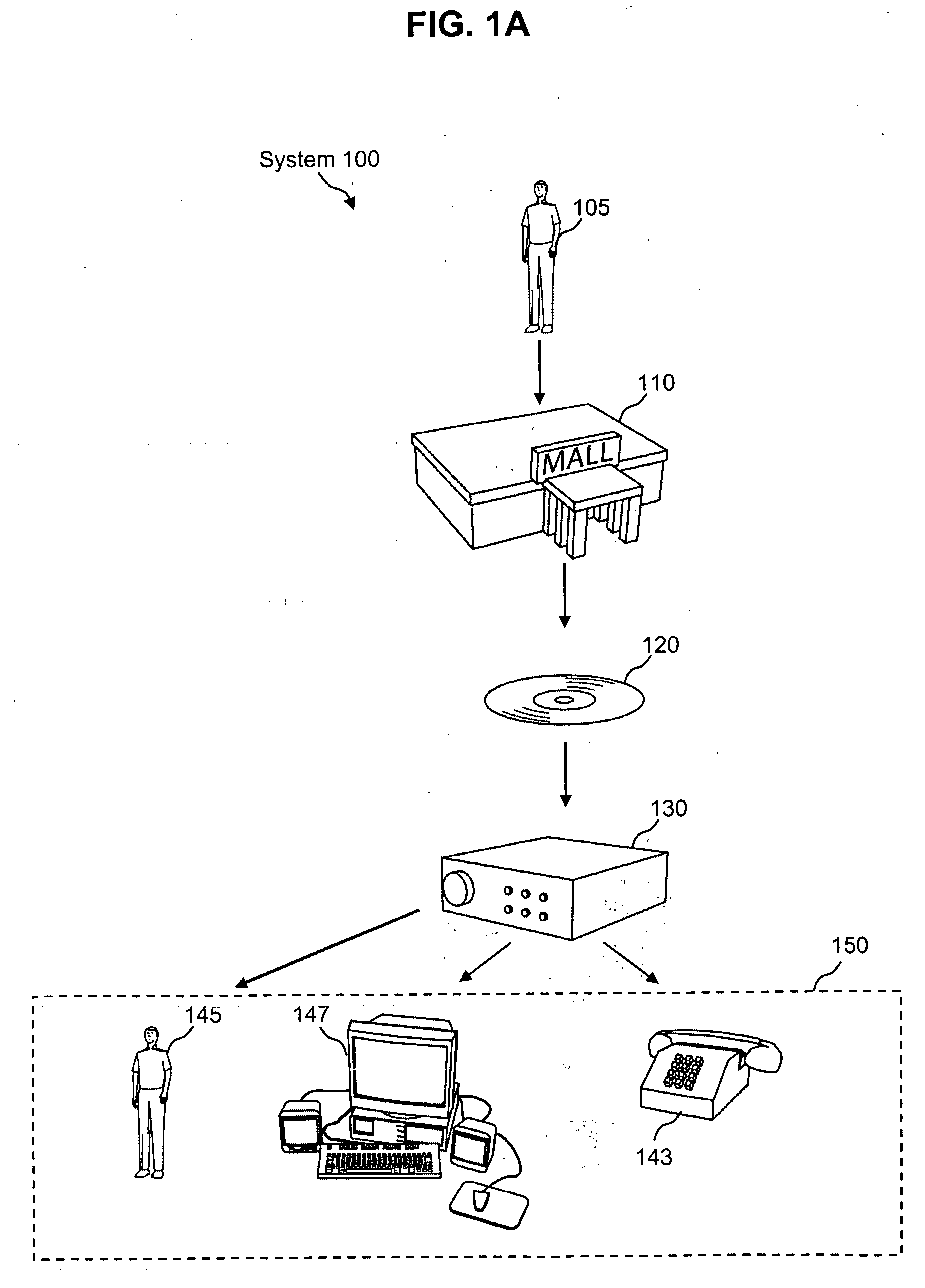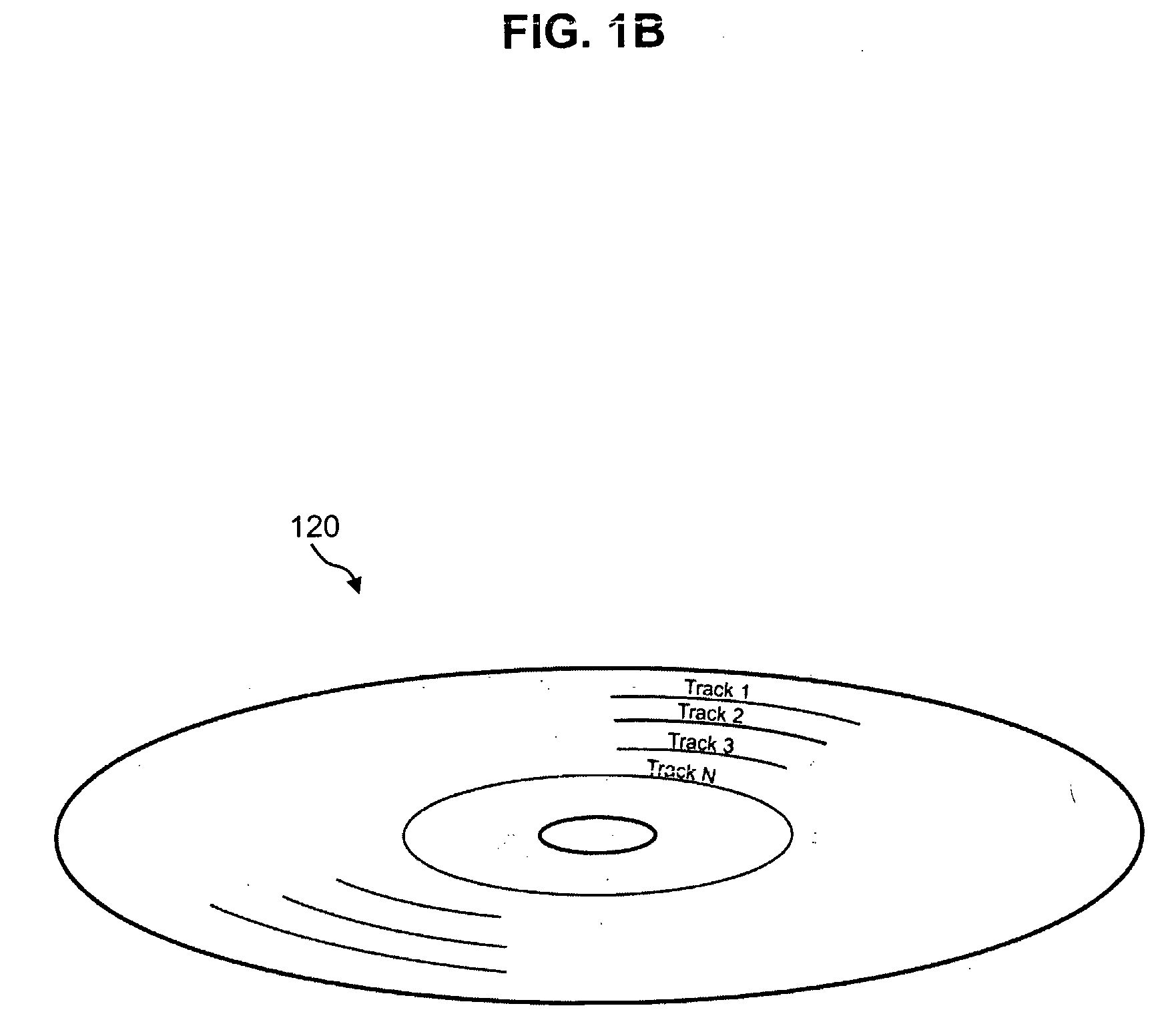Low-Cost Hearing Testing System and Method of Collecting User Information
a hearing aid and low-cost technology, applied in the field of hearing aid testing systems, can solve the problems of repeated exposure to very loud noise, painless hearing tests, and most people do not even know they have a hearing loss
- Summary
- Abstract
- Description
- Claims
- Application Information
AI Technical Summary
Benefits of technology
Problems solved by technology
Method used
Image
Examples
Embodiment Construction
[0031]FIG. 1A is a high-level diagram of a preferred system 100 including a user 105, an optimized pick-up location 110, a hearing test CD 120, a CD player 130, a telephone 143, a PC 147, an audiologist 145 and a next hearing test means 150.
[0032]User 105 represents the individuals (mass market) on whom a hearing test is to be administered. This is generally any and all individuals, but more specifically, the more than 10% of the population (e.g., 25 million Americans) that have hearing loss, including one out of four people older than 65.
[0033]Optimized pick-up location 110 is a location where it would make sense for a hearing test CD 120 to be available toga large number of the general populace. For instance, optimized pick-up location 110 could be in a popular public location, such as a shopping mall where user 105 has easy and frequent access. For example, optimized pick-up location 110 could be a CD music store in a mall, a CD player store, a consumer electronics retail store s...
PUM
 Login to View More
Login to View More Abstract
Description
Claims
Application Information
 Login to View More
Login to View More - R&D
- Intellectual Property
- Life Sciences
- Materials
- Tech Scout
- Unparalleled Data Quality
- Higher Quality Content
- 60% Fewer Hallucinations
Browse by: Latest US Patents, China's latest patents, Technical Efficacy Thesaurus, Application Domain, Technology Topic, Popular Technical Reports.
© 2025 PatSnap. All rights reserved.Legal|Privacy policy|Modern Slavery Act Transparency Statement|Sitemap|About US| Contact US: help@patsnap.com



